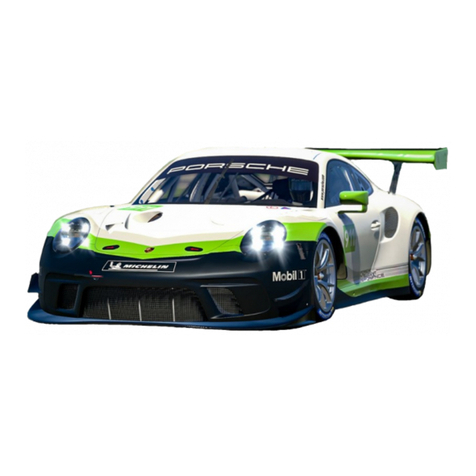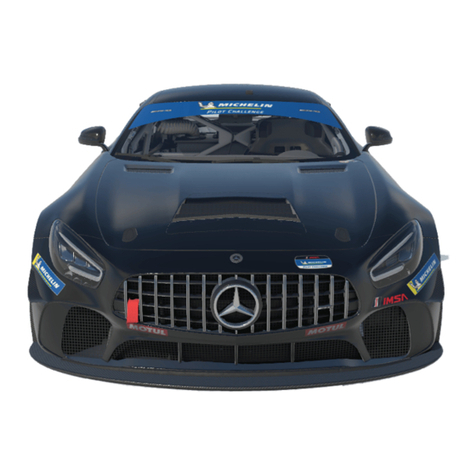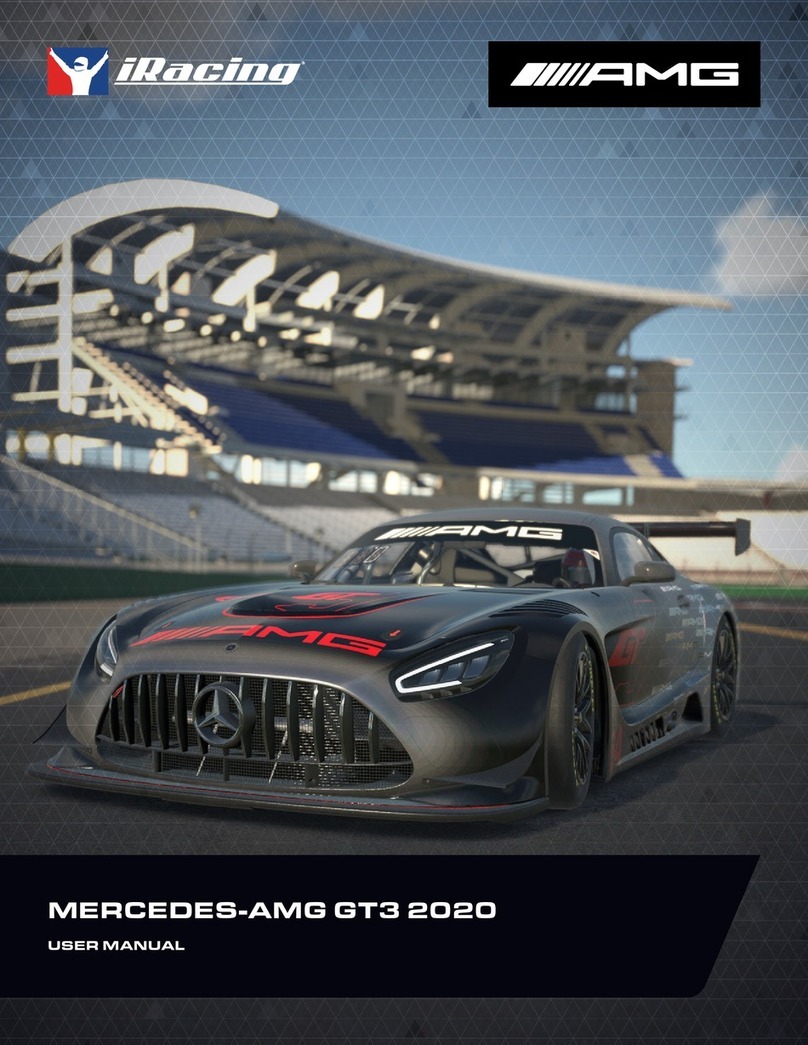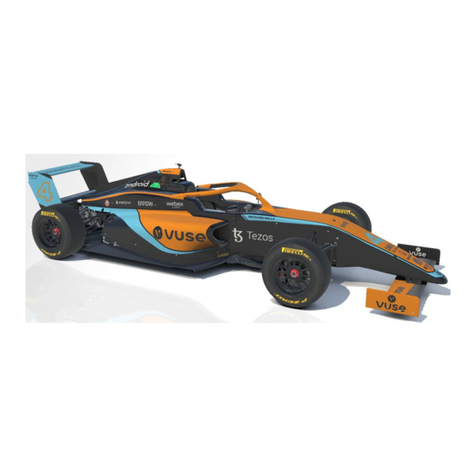
5
MCLAREN 570S GT4 // USER MANUAL
Introduction
The information found in this guide is intended to provide a deeper understanding of the
chassis setup adjustments available in the garage, so that you may use the garage to tune
the chassis setup to your preference.
Before diving into chassis adjustments, though, it is best to become familiar with the car and track. To that end, we have provided
baseline setups for each track commonly raced by these cars. To access the baseline setups, simply open the Garage, click
iRacing Setups, and select the appropriate setup for your track of choice. If you are driving a track for which a dedicated baseline
setup is not included, you may select a setup for a similar track to use as your baseline. After you have selected an appropriate
setup, get on track and focus on making smooth and consistent laps, identifying the proper racing line and experiencing tire wear
and handling trends over a number of laps.
Once you are confident that you are nearing your driving potential with the included baseline setups, read on to begin tuning the
car to your handling preferences.
GETTING STARTED
Before starting the car, it is recommended to map controls for Brake Bias and ABS/TCS/ESC settings. While this is not
mandatory, this will allow you to make quick changes to the brake bias and stability management systems to suit your driving while
out on track.
Once you load into the car, getting started is as easy as pulling the “upshift” paddle to put it into gear, and hitting the accelerator
pedal. This car uses an automated sequential transmission and does not require manual clutch operation to shift in either
direction. However, the car’s downshift protection will not allow you to downshift if it feels you are traveling too fast for the gear
requested. If that is the case, the downshift command will simply be ignored.
Upshifting is recommended when the shift lights on the dashboard are all fully illuminated. This is between 6800 and 7300 rpm
depending on the currently selected gear.
MCLAREN 570S GT4 // INTRODUCTION


































